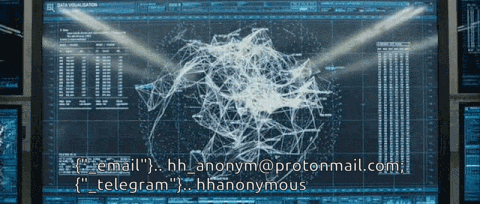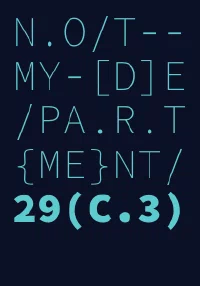//… Welcome to HH – Anonymous your trusted team of professional hackers experienced in a wide range of hacking services. Our team of certified hackers have been providing secure hacking services to individuals as well as establishments. Have you tried to buy hacking services on the darkweb before? Not happy with the results? Only empty promises but no one getting the job done?
Then you should try Hire Hackers, the most trusted hackers for getting things done. Unlike others, our prices are not the cheapest, but if we can’t do a job, you will get a full refund;
Hire a Hacker | Rent A Hacker | Hackers for Hire
We offer best quality professional hacking services that can’t be matched with other hacker for hire company. Our professional hackers have most advanced hacking technique to hack Facebook, Snapchat, Whatsapp, Twitter, Instagram, Email accounts, Gmail, SmartPhone, Website, Database and many more. Also you can request for customized hack. These days hiring a professional hacker is difficult. You might get scammed for wrong hacking services or by fake hackers on the Internet. Don’t get fooled by scammers that advertising false professional hacking services.

< Hackers For Hire >
If you wish to hire a hacker offering Professional hacking services, don’t look anywhere else as we provide you effective and top-notch services. However, our belief is that work can be done in a secure and flexible environment. We have several years of expertise in this industry and are working tirelessly ever since to make cyber space a safe place for users. Hire hackers
Our existing clients vouch for our services. They come back to us with more requirements because they are aware that we are the best in the industry!
< Hire Hackers Services >
Where can I find hackers?
… Our Hackers for hire offer a wide range of professional hacking services.We aim to make all kind online protections for our valuable clients. Hire a Hacker for all of your hacking needs!
➣ LISTS OF SERVICES WE OFFER;
✧ Mail hacking and control ranging from gmail,yahoo mails, professional emails….to even secured mails with 4096bits encryptions
✧ Pc jailbreaking/hacking (windows,mac,linux distros….)
✧ Grade change
✧ Phone Number Audit
✧ Full package deal, getting access to personal or company devices and accounts and searching for the data you need.
✧ Debt clearing
✧ Website/php admin hacking (we can give full access or steal any log or info)
✧ Passport,ids or certificates that can work like the real one
✧ Geo-locator/phone number tracking
✧ Economic espionage and corporate espionage
✧ Catch cheating partner / cheating partner monitoring
✧ Mobile hacking/mobile remote access
✧ Social media accts hacking or access cloning
✧ We can help you track anyone(just give us any valid information about your victim)
✧ Run Social media campaigns
✧ Revenge Porn
✧ Access to Government and company Database
✧ Evidence Recovery
✧ Clear Criminal rrecords
✧ Game Hacking
✧ Target Audit
✧ If u also need to hire a hacker from us for your private use(we charge per hours of work done)
❖ SPECIAL SERVICES OFFERED BY OUR CERTIFIED ETHICAL HACKERS ARE;
✧If u need any other special services not listed above you can contact us. Whatever your request might be guaranteed that you are in contact with the right team capable with all the technicalities you need to make it happen;
< How to hire hackers >
… Contact the admin on hh_anonym@protonmail.com
TELEGRAM: hhanonymous
✧ Explain in detail the hacking services needed.
✧ The admin will tender your hack offer to the rest of the team to determine;
➵vulnerability of the hack job
➵percentage of success
➵number of hours/days to complete the job
➵cost of completing the job
✧ All the information above will be sent back to your mail within 30mins – 1hr
✧ Once payment is completed,your job becomes valid and it’s being transferred to the team for completion;
✧ We accept BTC, BCH, Monero, ETH
If you run a large company or any business, there is a need to hire a hacker. HHAnonymous group ensures that your system, application, website, and other cyber spaces are safe from threats. Hire a hacker today to be safe from future cyber threats.
WHY CHOOSE HIRE HACKERS ?
Choose our expert hackers to protect your digital assets and stay one step ahead of potential threats. Get in touch with us today to discuss your hacking needs and find out how our experts can assist you.
Industry Experience: Our team consists of hacking experts with years of industry experience, ensuring top-quality services and cutting-edge techniques. Hire hackers
Certified Professional Hackers: All our hackers are certified and undergo rigorous training to stay updated with the latest cybersecurity trends.
Confidentiality: We prioritize your privacy and maintain strict confidentiality in all our dealings. Your sensitive information is safe with us. hackers for hire
Tailored Services: Our hacking services are tailored to your specific requirements, providing targeted solutions to enhance your security. professional hacker
Hire Hackers Aftersale services
… A hacking offer will not be marked completed until customer display satisfaction i.e we are still indebted to you until job is fully completed.
➵ We provide guides on every hacking tools we sale with 24/7 support after purchase until customer fully understand the technical know-how. hackers to hire
➵ Guides are provided on installation of geo-ip locator/remote panel & on any other job.
➵ We are always happy to receive your feedbacks and criticisms ;
Hire hackers assurances/protection
… HH-Anonymous Group offers hire hackers services to local and global clients. Many companies require professional hackers to retrieve and recover information such as lost company data and accounts…. Our lists of satisfied customers is a testimony of the quality and trusted services we always render. Preserving our customer’s identity and integrity are always top priority.
Messages are encrypted, money exchanges are in cryptocurrency and once completed, all digital footprints are meticulously erased.
In case the services provided by us does not meet your desired expectation, we will refund the money to you. There is a procedure you have to follow for refunds. Hire hackers
Send us a message to hire hackers and we will check the status of your order. If we have failed and not provided the desired services, you will have full refunds. Please note that our services are topnotch and we guarantee results within the given time. There is only one way of finding out – hire hackers from our company and you will not regret it.
Relevant keywords
Professional and Reliable EMail Hacker for Hire | Hire a Hacker to Delete Your Criminal Record | Professional and Reliable EMail Hacker for Hire | Hire a Team of Professional Tick Tok Account Hackers | Professional Team of Bitcoin Wallet Hackers for Hire | Professional Whatsapp Account Hacker for Hire | Hire a Professional Hacking Team | Hire a Professional Instagram Hacker | Hire a Team of Professional Facebook Hackers | Professional Website Hacker for Hire | Phone Hackers for Hire | Hire a Professional YouTube Hacker | iCloud Account Hackers | Bitcoin Wallet Hacker for Hire | Target Audit | Phone Number Audit | Instagram Audit | Twitter Audit an account
